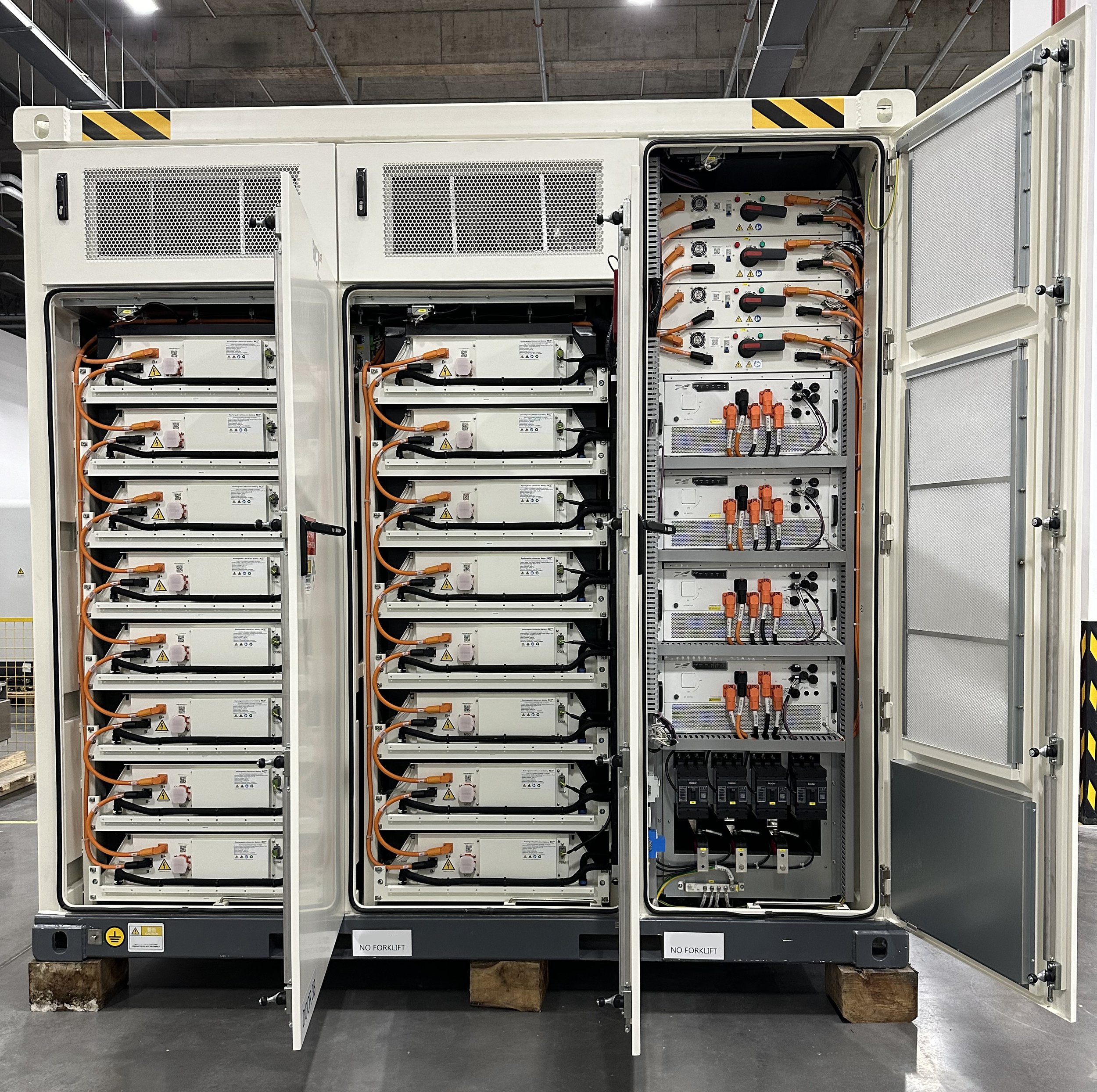
ENERGY
MOBILE MICROGRIDS
Our microgrid systems ensure reliable power for mission-critical operations. The system continually monitors and automatically adapts to system conditions to optimize resiliency and minimize fuel consumption. Capabilities include parallel generation combined with battery energy storage and solar that reduces fuel consumption up to 70 percent. MIL-STD-3071 Tactical Microgrid Standard and NERC CIP, RMF, NIST security compliance are available. System sizes are scalable from 5 kW and greater than 1MW.
Our mobile microgrids power most every professional sports championship game as well as our country’s most effective missile defense systems.
BATTERY ENERGY STORAGE SYSTEMS
A Battery Energy Storage System (BESS) is a system that stores electrical energy in batteries for later use. When Amazon needed a mobile battery storage system to support charging their fleet of Rivian electric delivery vehicles, Wenzlau Engineering delivered a 1.5MW BESS using high-performance LiFePO4 batteries. This all-in-one cabinet offers maximum performance in a small 10 foot ISO container. The units allows for peak shaving and load shifting, providing energy independence from the grid and generators. The system can be relocated to support unreliable utility power or assist in disaster recovery. The systems provide various grid services, such as frequency regulation and voltage support, enhancing grid stability and reliability. Permitting for fixed installations can take years, while our mobile units can immediately deploy providing real time solutions for energy needs. Units are UL 9540 rated.
UNINTERRUPTIBLE ENERGY SUPPLIES
If you are powering the broadcast and replay electronics for the most viewed sport event in the world, there is one football Sunday in February where the site power cannot fail. Wenzlau Engineering designs and manufactures fail-safe energy systems that are deployed so the shows goes on. Our Uninterruptible Energy Supply (UES) integrates 800 kWh of batteries, redundant power converters, and dual generators onto a single trailer, resulting in a highly resilient mobile microgrid.
If power to a critical computer is interrupted for even 1/100th of a second, it could shut down. Our system is designed so power is never interrupted. Everything is always powered by the batteries and the batteries can always be charging. Even if the input sources change or stop, we will continue to supply precise power for several hours. Now that’s a World Champion solution.
VEHICLE CENTRIC MICROGRID MISSION PLATFORM (BIDS)
We developed a JLTV based mobile mission platform for the US Army. Working with GM Defense, we incorporated a General Motors EV battery pack to provide 100 kWh of energy storage to power mission electronics. The system uses bi-direction power converters to allow for world-wide power interface to NATO interoperability. The system can control AMMPS generators and is MIL-STD-3071 Tactical Microgrid Standard compliant. Our platform incorporates shock isolated racks to protect advanced servers. Multiple communication backhauls are available including STARLINK/STARSHEILD, LEO/GEO/LTE/Fiber. The system is flexible to support any types of mission payload.
GENERATORS
We engineer and manufacture engine driven generators that operate on multiple fuel types. Our systems are designed for extreme environments ranging from -60°F (-51°C) to 131°F (55°C), wind, sand, dust, salt fog, etc. Units can be protected for susceptibility to High Altitude Electromagnetic Pulse (HEMP). If there is an extreme requirement, we have most likely tackled it. We look at which components fail and build in redundancy. We validate performance through extensive testing. Most importantly, we incorporate the lessons learned from over 60 years of having equipment deployed in hostile environments. We keep listening, learning, and innovating.
DISTRIBUTION AND CONVERSION
Portable power distribution equipment and power conversion units are indispensable for the DoD, providing a reliable and flexible power solution that supports diverse military operations, enhances mission readiness, and ensures continuous power supply in forward theater environments.
The ability to rapidly deploy, relocate, and reconfigure power distribution and conversion units provide flexibility in dynamic operational theaters. This is essential for adapting to changing tactical situations and mission requirements.
Our rugged units incorporate software based monitoring and control. They can handle various voltage levels (e.g., 120V, 208V, 240V, 400V, 4160V) and frequencies (e.g., 50Hz, 60Hz, 400Hz) to accommodate different types of equipment and local power standards.
THIN-FILM SOLAR
We integrate thin-film solar panels onto multiple materials and structures to generate power. We use advanced Crystalline Silicon Solar Cell (C-Si) technology in a flexible format to allow for strain relief for expansion/contraction. Our panels are 80% lighter than glass systems and we eliminate cell cracking and interconnect fatigue failures. Our panels are designed for suboptimal sun angles and dynamic environments typical with our mobile deployments. Panels are military qualified through MIL/IEC/UL environmental and lifecycle testing. Adhesive are rated for 150 mph wind. Panels are soil resistant with an outer ETFE layer that requires less cleaning. Temperature testing from -70C to +85C show 50X more resiliency than glass panels.
SURFACE WIRE GROUND KITS
MK-2551 A/U
The MK-2551 A/U is an alternative grounding system that has been designed primarily for use with systems requiring high mobility. It is easily emplaced and removed, offering a reasonable option in situations where driving/retracting conventional ground rods would be difficult and/or too time consuming. US Army analysis shows surface wire grounds are equal to, or superior to, ground rods in terms of electrical properties and that they are easier to install and remove. Because the Surface Wire Grounding Kit (MK-2551 A/U) stakes have a combined stake surface area approximately 50% greater than a standard 8 foot ground rod, the MK-2551 A/U provides a path to the ground with significantly lower resistance. Resistance is further reduced through additional contact area provided by the wire routed between the multiple stakes.










